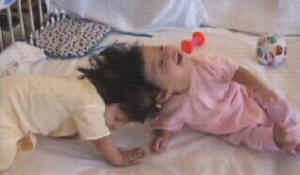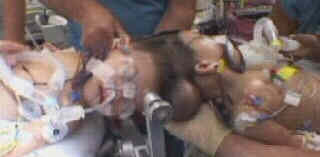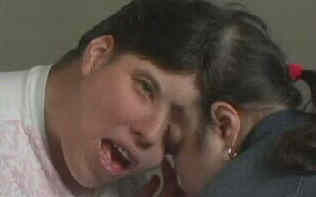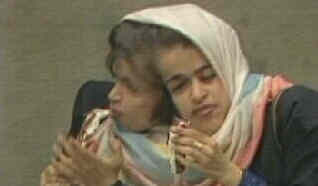Conjoined Twins
Joined at the Head
Maria de Jesus (Josie) and Maria Theresa (Teresita) Alvarez
Born joined at the head in Guatemala Josie and Teresita might have gone unnoticed except that an American aid worker, Chris Embleton the founder of the charity Healing the Children, heard about the children living in a hospital in Guatemala City.

Josie and Teresita Alvarez
Through her contacts with Healing the Children, Chris was able to arrange for the twins to travel to a hospital in Los Angeles for evaluation. Surgeons quickly concluded that Josie and Teresita would not be able to live out their lives while they remained conjoined in the way that they were. Even compared to other conjoined twins, theirs was an extremely complicated case.
Henry Kowamoto, director of craniofacial surgery said "These twins were joined by the tops of their heads which just isn’t compatible with life." Planning the separation of the twins would take dozens of specialists from different fields and months of preparation. Fortunately, they didn’t share brain tissue, they had separate brains. They did share an intricate web of blood vessels.
Identical twins are formed when when a fertilised egg splits cleanly, one or two days after conception. Conjoined twins occur when the egg splits incompletely about nine days after conception.
The surgeons all agreed that the sooner surgery could be performed the better the chance of success, as when the girls were older it would be far more complicated.

Prepared for Surgery
The surgery to separate the girls went smoothly, but the recovery did not. Teresita, who had been the stronger of the two, suffered a number of setbacks as swelling created pressure on her brain causing damage that would impair her hearing.
Then, 10 months later she suffered an unrelated but disastrous turn. Ecoli meningitis, a bacterial infection that ravaged her body with fever. The twins were rushed back to hospital and, after several courses of powerful antibiotics and weeks of hospital care, Teresita pulled through but, the cost was high, the meningitis had left her brain-damaged.
It was not all plain-sailing for Josie either. Her time spent conjoined had contorted her neck and spine and her legs are underdeveloped. She will need extensive physiotherapy to try and correct the problems.
We leave the twins celebrating their third birthday with their foster families.
Lori and Dori Schappel
When Lori and Dori were born in 1961, the surgery undergone by the Alvarez twins was not an option. Also conjoined at the head, these girls are the oldest living conjoined twins. Adding insult to injury Dori was born with spina bifida leaving her lower limbs underdeveloped and reliant on sister Lori for her mobility.

Lori and Dori Schappel
These sisters have learned to cope quite remarkably with their conjoined condition. They have not sought surgery to separate them and at 44 years old it would almost certainly be impossible.
Laleh and Ladan Bijani
The Bijani sisters, on the other hand, were determined to be separated. In their late twenties Laleh and Ladan lived in Tehran, Iran and both had law degrees. Intelligent and educated, they fully understood the risk posed by separation surgery.
Benjamin Carson, Director of Paediatric Neurosurgery at John Hopkins strongly advised the girls against risking surgery, for among other reasons, they would be the oldest conjoined twins to undergo such complex surgery.

Laleh and Ladan Bijani
The surgery was scheduled to take place in Singapore and attracted a lot of media attention.
The operation did not go smoothly and after a marathon 50 hours, the surgeons had nearly completed the separation when the girls began to bleed uncontrollably. The doctors could do nothing to help, and Laleh died on the operating table, followed ninety minutes later by Ladan.

